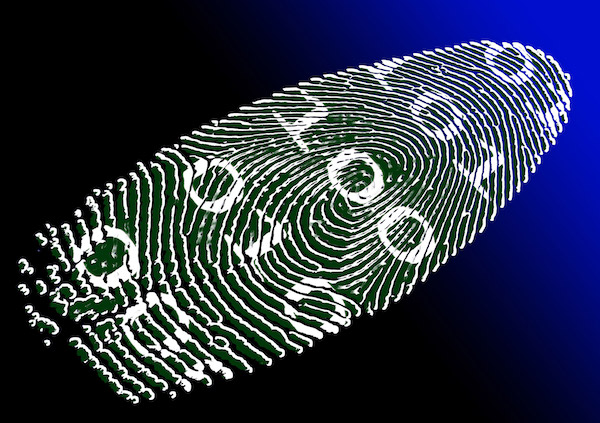- 1
- 2
- 3
- 4
- 5
- 6
- 7
- 8
- 9
Photo: Public Domain

Protect Yourself From Identity Theft
Identity theft is a type of crime that is quickly becoming more prevalent. Use our tips to learn how to best protect yourself.
Download and print these tips
Keep Your Social Security Number Safe
Do not disclose your full nine-digit Social Security number unless absolutely necessary, and never use it as an identifier or password. Question those who ask for it. Also, shred documents containing personal information (name, account numbers, social security number, birth date) before throwing them away.
Keep Yourself Safe With Electronic Billing Options
Avoid paper billing by requesting secure electronic statements instead. If you require hard copies, you can print and store them safely without risking mail theft. Also, lock your mailbox if it's lockable.
Keep Yourself Safe On Your Computer And Cell Phone
Configure your computer and/or smartphone to require a password for use, and set another password for sensitive files. Use unique passwords that include a combination of letters, numbers and symbols. Do not use your birth date, a close relative's birth date or a combination of letters and numbers on Splashdata's annual list of the most stolen passwords.
Also, avoid using the same password for different accounts, and change your passwords once or twice per year. It is also a good idea to install and update antivirus, anti-malware and security programs on all computers, tablets and smartphones.
Don’t disclose information commonly used to verify your identity on social networking sites, such as date of birth, city of birth, mother’s maiden name, name of high school, etc. If you do, don't use that information to verify your identity.
Keep Yourself Safe On The Internet
Avoid using credit or debit cards, conducting online banking transactions, making purchases, paying bills or sending sensitive information over unsecured WiFi networks (e.g., any network without a password log-in, such as on trains, at airports, coffee shops or hotels).
Watch out for “phishing” and other “social engineering” scams. Phishing is when identity thieves request personal information by pretending to be a legitimate entity, such as a bank or the IRS. Ignore unsolicited requests for personal information by email or over the phone, and only contact entities by means you know to be authentic. Do not contact an entity by clicking a link sent as part of an email requesting personal information, because phishers often link to authentic-looking, fake webpages. You can also call the phone number on the back of a card previously issued to you, or call the phone number on an old statement from that issuer.
Keep Yourself Safe From "Skimmers"
Fight “skimmers.” Do not give your debit card to a restaurant server or anyone who could have a hand-held skimming device out of sight. When using an ATM, look for suspicious cameras and holes, and touch to confirm that extra parts (loose or slightly different colors) have not been installed over the card reader. Always cover your hand while hand typing a PIN, and avoid using ATMs in secluded locations.
Freeze Your Credit Reports
Place security or credit freezes on your credit report. Our separate “security freeze” tips explain how to guarantee peace of mind against new account identity theft by freezing your credit reports, then thawing them only when you are in the credit markets. A creditor will deny credit to an imposter who applies for credit using the name and Social Security Number of a consumer who has placed a freeze.
What To Do When You Detect New Account Identity Theft
Step 1: Notify your financial institutions.
If you discover that your wallet, checkbook, credit card or other sensitive information has been lost or stolen, immediately notify the issuing bank, credit card issuer or relevant institution to close all existing accounts.
Step 2: Get an Identify Theft Affidavit.
If you suspect identity theft, report it to the Federal Trade Commission using the online complaint form or by calling 1-877-ID-THEFT. When making the report, you will be given an option to receive an Identity Theft Affidavit. This document, together with the police report, will be critical to minimizing the damage.
Step 3: File a police report.
If you believe you are a victim of identity theft, file a report with your local police department. When you make the report, bring a copy of the Identity Theft Affidavit. The police report will be important for insurance purposes. Keep copies of the police report and Identity Theft Affidavit.
Step 4: Contact the three major credit reporting companies and place a fraud alert on your accounts. If you haven’t already, it’s time to place a security freeze.
What To Do When You Detect New Account Identity Theft (Continued)
An important next step is to place a fraud alert and a security freeze on your credit report. Placing a fraud alert tells businesses checking your credit rating that there may be fraud involved in the account. The fraud alert must be renewed after 90 days, and it entitles you to receive one free credit report from each of the main agencies. The security freeze stops anyone from seeing your credit report without your permission. Alerts and freezes can be placed by contacting the toll-free fraud number of any of the three consumer reporting companies noted below. Initiating a credit freeze does not impact your credit score.
TransUnion:
1-800-680-7289
www.transunion.com
Fraud Victim Assistance Division
P.O. Box 6790
Fullerton, CA 92834-6790
Equifax:
1-800-525-6285
www.equifax.com
P.O. Box 740241
Atlanta, GA 30374-0241
Experian
1-888-EXPERIAN (397-3742)
www.experian.com
P.O. Box 9554
Allen, TX 75013